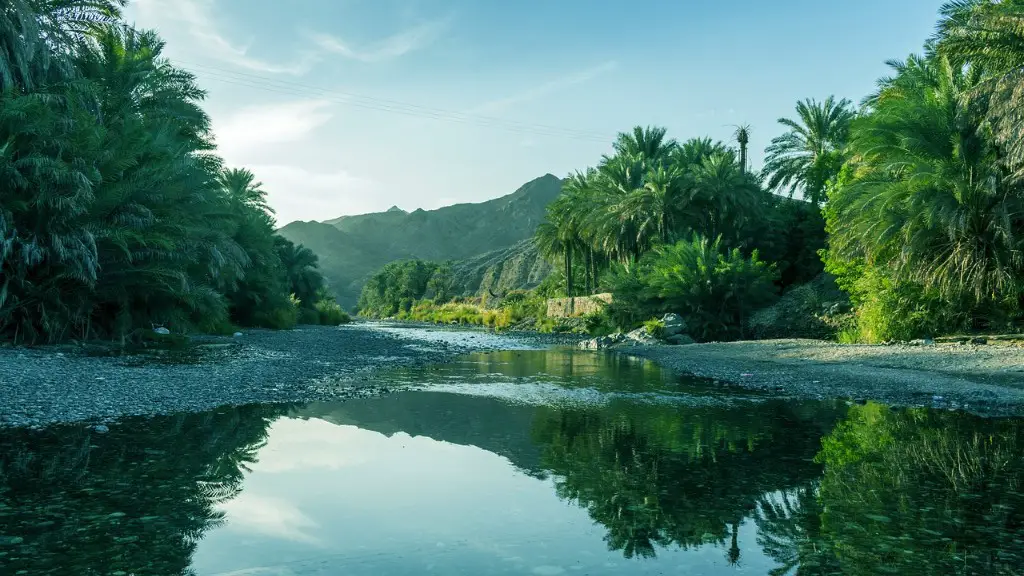Mississippi River Pollution
One of the world’s longest rivers, the majestic Mississippi provides over 34 million people across the United States with drinking water, irrigation for crops, and transportation avenues. It cuts through multiple states and eleven major cities, emptying into the Gulf of Mexico and traversing a variety of ecological systems.
The Mississippi, due to its long history of use and development, suffers from high levels of industrial and agricultural pollutants. These enter the river from contaminated runoff from the many farms and factories along its banks, as well as from cities and towns adjacent to the river. This can result in a wide range of environmental damages, both in terms of wildlife and humans.
One of the most dangerous sources of pollution in the Mississippi is nitrogen, which can lead to eutrophication, or the overgrowth of Beneficial Algal Blooms (BABs). High levels of nitrogen in the water can lead to large algal blooms, which can spread into nearby lakes, rivers, and coastal areas. These blooms can reduce water quality, resulting in fish kills, reduced oxygen levels, and the contamination of drinking water.
Another major source of pollutants comes from hazardous chemicals, including heavy metals, DDT, PCBs, and lead. These substances in and of themselves are detrimental to human and aquatic life, but can be even more dangerous when released into water systems. They can enter the water through industrial and agricultural runoff and are extremely difficult, if not impossible, to clean up.
The effects of these pollutants can be both immediate and long-term. Immediate impacts can include an increase in water turbidity, reduced oxygen levels, algal blooms, and toxic materials entering into the food chain, potentially affecting drinking water. Long-term damage can include ecosystem destruction, altered nutrient cycles, and a decrease in recreational activities such as swimming and fishing, among other effects.
Concerns with Swimming in the Mississippi
Given the pollution in the Mississippi, there are serious concerns regarding swimming in the river. Firstly, the presence of hazardous chemicals can present serious health risks for humans. Secondly, it can be extremely difficult to discern whether or not the water is contaminated, as pollutants are often not visible until extensive testing is done.
It can also be difficult to avoid areas where pollutants may be particularly concentrated, such as where factories and farms release vast amounts of pollutants. This can present a risk to swimmers, who may be unaware of the potential dangers in the river. In addition, there are pollutants such as pharmaceuticals, which cannot be seen and may not be detectable by traditional water testing methods.
The appearance of the river can be misleading as well. Even if the river looks clear, it does not necessarily mean that it is safe to swim in. Surface appearances can often be affected by the presence of harmful algal blooms, which can release toxins into the water. In addition, currents can often be strong and unpredictable, posing yet another potential danger to swimmers.
Areas of Safe Swimming
Given the risks that swimming in the Mississippi can present, it is important to identify areas of safe swimming. The Environmental Protection Agency (EPA) puts out regular advisories regarding water conditions and pollution levels in the river, which can be used as a reference point when deciding whether or not to swim in a particular area.
In addition, local government agencies often recommend certain areas for safe recreational activities. These can be identified by contacting the local county or city offices. Certain natural areas can offer swimmers protection from pollutants, as the presence of plant life and limited human interference help to reduce the concentrations of pollutants in the water.
The presence of sewage in the river is another concern for swimmers, as the presence of bacteria and other disease-causing organisms can be a threat to human health. Sewage can be caused by malfunctioning wastewater treatment plants, snowmelt, or storm runoff. While it is important to identify areas with minimal sewage pollution, it can be difficult to do so, as levels of sewage can vary greatly, even in the same area.
Water Quality Testing
Testing the water quality is the best way to determine if it is safe to swim in the Mississippi, as it can detect levels of hazardous chemicals, disease-causing organisms, and other pollutants. Water testing kits are available that allow people to test water samples collected directly from the river.
In addition, the EPA and local governments regularly conduct water quality tests in the river, which are freely available to the public. These tests measure the presence of pollutants such as nitrogen, heavy metals, and bacteria, and can be used to determine if it is safe to swim in particular areas.
However, it is important to note that water quality tests can only provide a snapshot of the pollution levels at a given point in time. As levels of pollutants can vary greatly, it is important to test water samples regularly in order to ensure that it is safe to swim in.
Precautions for Swimming in the Mississippi
Given the risks associated with swimming in the Mississippi River, it is important to take precautions to ensure that a person’s safety is not endangered. It is important to stay informed on the latest water quality test results, and to adhere to advisories issued by the EPA and local agencies.
In addition, it is important to understand the specific risks associated with swimming in the river. For example, areas with high levels of agricultural runoff may present a risk of illness due to the presence of bacteria and other pollutants. Similarly, areas near factories may harbour hazardous chemicals in the water, which are difficult to detect and can be fatal if ingested.
It is also important to wear protective clothing when swimming in the Mississippi, including a long-sleeved shirt and wetsuit. This clothing will help to protect the skin from pollutants and bacteria, as well as keep other contaminants from entering the body through the skin.
Finally, Do Not Swim Alone
Finally, it is important to never swim in the Mississippi alone. This is especially true for inexperienced swimmers, as the difficulty of swimming in the currents and the presence of unpredictable obstacles can easily lead to a person becoming fatigued and in need of help. Swimming in groups is the safest approach, as there will always be someone close by who can offer assistance in the event of an emergency.
Safety Measures and Regulations
To help protect people from the dangers of swimming in the Mississippi, local governments may implement safety regulations and put in place enforcement measures. For example, swimming may only be allowed in designated areas, such as beaches that have been tested and approved by local agencies.
In addition, equipment such as life vests, ropes, and buoys may be required in certain areas in order to protect swimmers from accidents or getting lost in the river. Enforcement measures may also be put in place to ensure that the regulations are followed and that people do not swim in areas that are not approved for swimming.
The presence of signage along the river is another example of a safety regulation that may be put in place. These signs can help to inform people of the potential dangers associated with swimming in the river, as well as the locations of safe areas for recreational activities.
In conclusion
Swimming in the Mississippi River can present serious risks to human health, as the water quality in certain areas may be contaminated with hazardous materials, bacteria, and other pollutants. It is important to stay informed on water quality advisories from the EPA and other agencies, and to take measures to ensure safety when swimming in the Mississippi.





